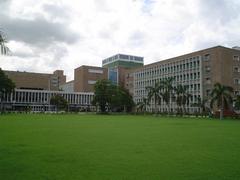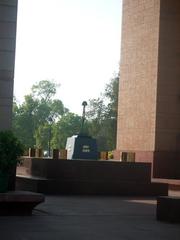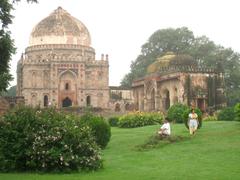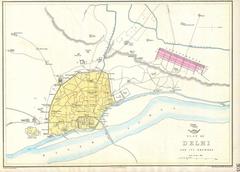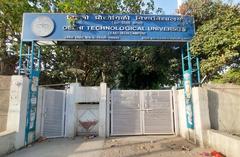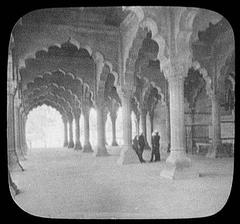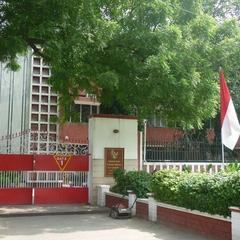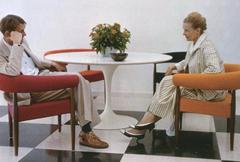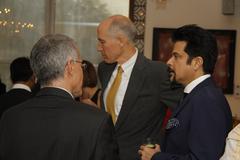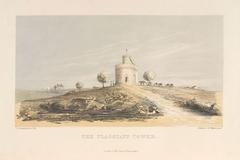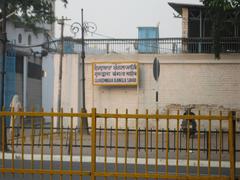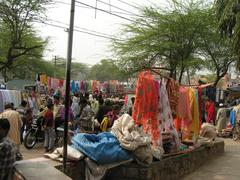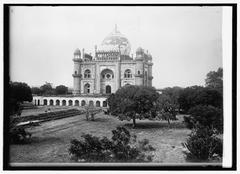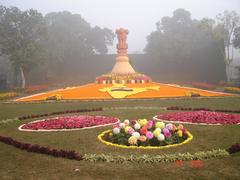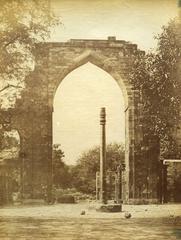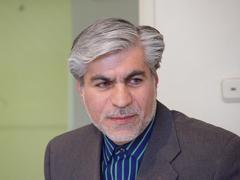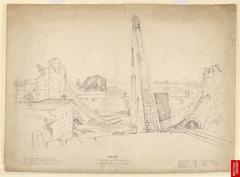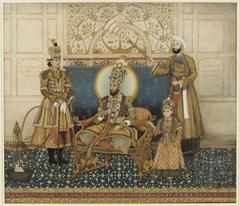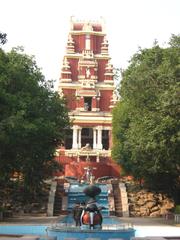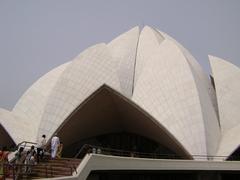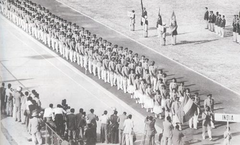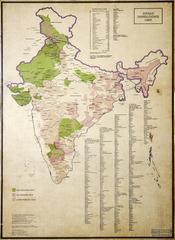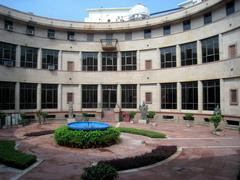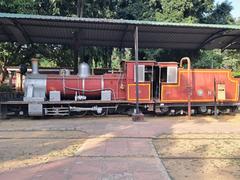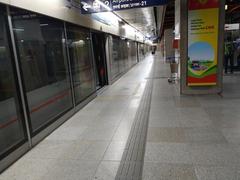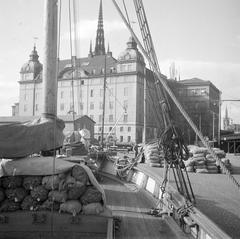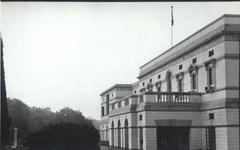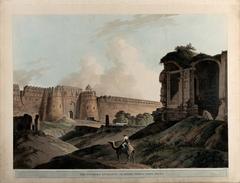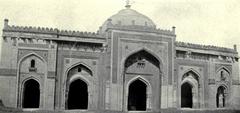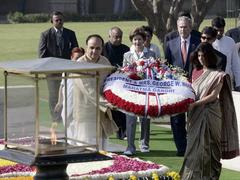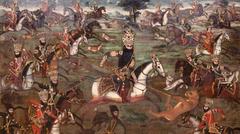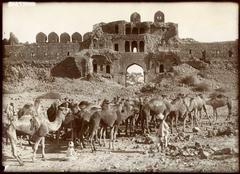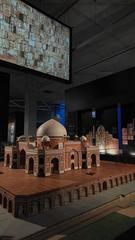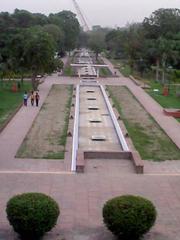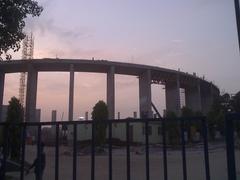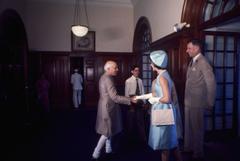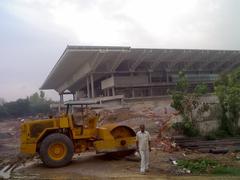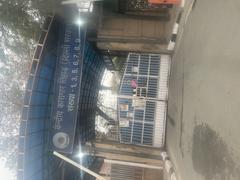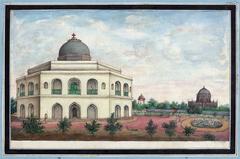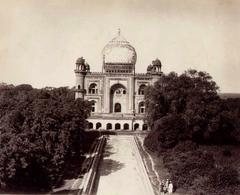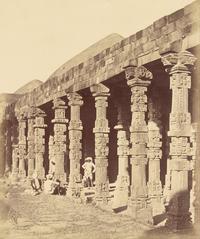Cathedral Church of the Redemption, New Delhi: Visiting Hours, Tickets & Visitor Guide
Date: 15/06/2025
Introduction
The Cathedral Church of the Redemption, fondly known as the “Viceroy Church,” stands in the heart of New Delhi as a striking testament to the city’s colonial history, architectural brilliance, and enduring spiritual significance. Consecrated in 1931 and designed by British architect Henry Alexander Medd—a protégé of Sir Edwin Lutyens—the cathedral’s serene white façade and thoughtfully ventilated interiors reflect a masterful blend of Renaissance basilica inspiration and adaptations to the Indian climate (so.city, TravelTriangle).
Today, the cathedral is a vibrant hub for Christian worship under the Church of North India, a symbol of interfaith harmony, and a cultural landmark surrounded by New Delhi’s iconic sites such as Rashtrapati Bhavan and Parliament House. This guide provides comprehensive visitor information, including history, architectural highlights, visiting hours, accessibility, travel tips, and answers to frequently asked questions.
Historical Background
Origins and Foundation
The Cathedral Church of the Redemption was conceptualized alongside the establishment of New Delhi as the new British capital in the 1920s. Its foundation stone was laid in 1927 under the patronage of Lord Irwin, the then Viceroy of India. Henry Alexander Medd’s design captured the grandeur and solemnity of European basilicas, notably Il Redentore in Venice, while accommodating Delhi’s climate with thick walls and strategic cross-ventilation (so.city).
Architectural Vision and Construction
Completed and consecrated in 1931, the cathedral features a cruciform layout, high altar under a half-dome, vaulted ceilings, and understated yet elegant interiors. Its setting among tranquil, tree-lined avenues creates a peaceful retreat from the city’s bustle (TravelTriangle).
Role During the British Raj and Post-Independence
Initially serving British colonial officials, the cathedral played host to official ceremonies, religious services, and significant community gatherings. After India’s independence, it was integrated into the Church of North India in 1970, broadening its reach to a diverse congregation and reinforcing its role as a symbol of unity and peace (so.city).
Heritage and Milestones
Recognized as a heritage site, the cathedral is renowned for its annual choral concerts during Easter and Christmas, reflecting its rich cultural and artistic heritage (Indianetzone). Over the decades, it has witnessed and adapted to the changing social, cultural, and political landscape of Delhi.
Architectural Inspiration and Features
Exterior and Setting
- Materials & Facade: The cathedral’s pale stone and stucco façade contrasts with Delhi’s prevalent red sandstone architecture. Shallow arches, pilasters, and a modest portico with heavy wooden doors define its entrance (TravelTriangle).
- Dome & Roof: The central dome, inspired by St. Paul’s Cathedral in London, is topped with a lantern that fills the nave with natural light.
- Landscaping: Surrounded by manicured lawns and mature trees, the church offers a tranquil oasis in central Delhi.
Interior Design
- Nave & Sanctuary: The nave features high ceilings, arched windows with stained glass, and a simple altar framed by a semicircular apse (Rama Arya Blog).
- Artistic Details: Stained glass windows, frescoes, carved wooden pews, and marble flooring add to the church’s understated elegance.
- Pipe Organ: Installed in 1931, the historic organ remains a highlight during musical performances (Wikipedia).
Climatic and Acoustic Considerations
The cathedral’s thick walls, high ceilings, and cross-ventilation ensure a cool interior, while its acoustics make it a favored venue for choral and organ music (TravelTriangle).
Cultural and Spiritual Significance
- Spiritual Sanctuary: The cathedral offers a peaceful space for reflection and prayer, serving as a spiritual haven for locals and visitors alike (Indianetzone).
- Multilingual Worship: Services are held in English, Hindi, and Tamil, catering to Delhi’s diverse Christian community (Delhi Tourism).
- Festivals: Major events like Easter and Christmas are celebrated with special services and musical performances, fostering interfaith harmony (Indianetzone).
- Community Outreach: The cathedral is involved in education and healthcare through institutions like St. Stephen’s College and Hospital (Indianetzone).
- Interfaith Harmony: Built with support from donors across religions, it stands as a beacon of cultural integration (Kahajaun).
Visitor Information
Location
Church Road, near Connaught Place, New Delhi. Close to Rashtrapati Bhavan and Parliament House.
How to Reach
- Metro: Nearest station is Central Secretariat (Yellow & Violet lines); short auto/taxi ride to the church.
- Bus: Frequent DTC buses connect nearby; taxis and auto-rickshaws are widely available.
- Rail: New Delhi Railway Station is about 5 km away.
Visiting Hours
- Monday to Saturday: 9:00 AM – 5:00 PM
- Sunday: Open for worship services from 8:00 AM
Hours may change for holidays or special events—confirm on the official website before visiting.
Entry and Tickets
- Entry: Free for all visitors.
- Donations: Welcomed to support maintenance and community activities.
Accessibility
- Wheelchair Access: Available at main entrance; accessible restrooms provided.
- Assistance: Special assistance for visitors with limited mobility can be arranged—contact ahead.
Guided Tours
- May be arranged upon request; reach out to the church office for schedules.
Photography
- Allowed: In most areas, but avoid flash and videography during services to preserve the atmosphere.
Visitor Etiquette and Travel Tips
- Dress modestly: Shoulders and knees covered; remove hats/caps inside.
- Respect services: Maintain silence during service times.
- Plan ahead: Weekdays are less crowded; check schedule for events or restricted access.
- Public transport: Recommended, as parking is limited.
Nearby Attractions
- Rashtrapati Bhavan
- India Gate
- Connaught Place
- Parliament House
- Jantar Mantar
- Gurudwara Bangla Sahib
- Hanuman Mandir
Combine your visit with these landmarks for a culturally rich day in Delhi.
Frequently Asked Questions (FAQ)
Q: What are the Cathedral Church of the Redemption visiting hours?
A: Monday to Saturday, 9:00 AM–5:00 PM; Sundays open for worship from 8:00 AM.
Q: Is there an entry fee or ticket?
A: No, entry is free for all.
Q: Are guided tours available?
A: Yes, by prior arrangement through the church office.
Q: Is the cathedral wheelchair accessible?
A: Yes, including accessible restrooms.
Q: Can I take photographs inside?
A: Yes, but avoid flash and be respectful during services.
Visual Gallery
Official Resources
- Official Cathedral Church of the Redemption Website
- Delhi Tourism
- TravelTriangle’s guide to Delhi churches
- Indianetzone
- Kahajaun
- Rama Arya Blog
- Wikipedia
Conclusion and Final Tips
The Cathedral Church of the Redemption is a serene blend of colonial history, architectural artistry, and spiritual inclusivity. With open visiting hours, free entry, wheelchair access, and proximity to major Delhi attractions, it is an accessible and enriching destination for all. Plan your visit during cooler months for the best experience, and attend special services during Christmas or Easter for a festive atmosphere.
Enhance your exploration by downloading the Audiala app for guided tours and updates, and follow us on social media for more travel tips and event news. Make the Cathedral Church of the Redemption a highlight of your New Delhi itinerary—you’ll leave inspired by its legacy and tranquility.
Sources and Further Reading:

